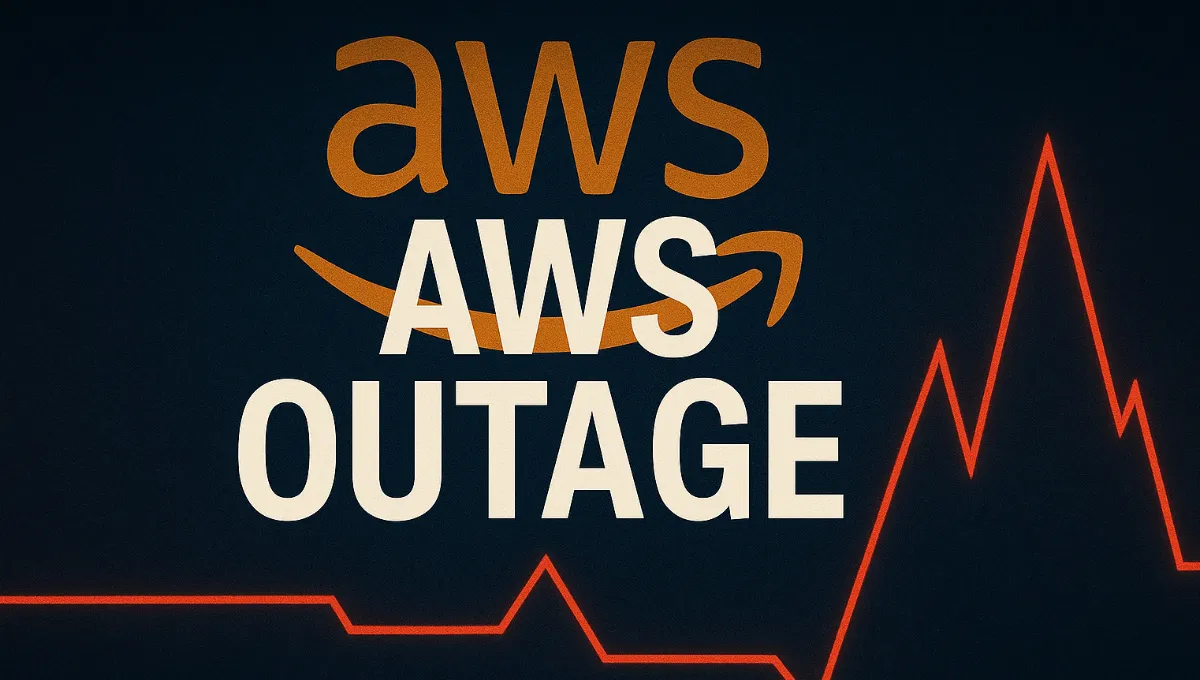When the internet breaks, so does modern life. On an otherwise ordinary Tuesday morning in October 2025, millions of Americans suddenly saw familiar errors—“503 Service Unavailable” and “Connection Timed Out.” Within minutes, the words “AWS outage” were trending nationwide. The digital nervous system of the United States—banking apps, news sites, smart homes, even hospital dashboards—froze in collective paralysis.
For most users, Amazon Web Services is invisible. Yet this single infrastructure quietly powers about a third of the global web. From Netflix’s recommendation engine to small business websites in rural Ohio, AWS is the unseen backbone of digital America. When it fails, it feels as if the entire country loses electricity.
The trigger this time was an East Coast region failure that cascaded through load balancers and authentication servers. Engineers watching their dashboards at dawn saw latency spikes jump from milliseconds to minutes. Within ten minutes, major services like Slack, Robinhood, and the New York Times API started collapsing. Twitter’s trending panel turned into a live panic board: “AWS down again?”; “Can’t access my cloud database.”; “Is the internet broken?”
The outage lasted barely three hours, but its psychological impact will echo for months. Businesses lost billions in combined downtime, while ordinary users realized how deeply their routines depend on the cloud. DoorDash couldn’t process lunch orders; Tesla cars couldn’t sync routes; even Alexa stopped responding in kitchens across the U.S.
Experts were quick to point out that this was not just a technical glitch but a systemic risk. Cloud computing has become the single point of failure in the digital economy. Despite the illusion of decentralization, the modern internet runs through a handful of hyperscalers—Amazon, Microsoft, Google. One misconfigured router or expired certificate can stall an entire economy faster than any natural disaster.
Security analysts compared the event to a “digital earthquake.” What was once considered a niche IT concern has turned into a national infrastructure issue. In the hours following the incident, the Department of Homeland Security’s cyber unit held emergency briefings with Amazon engineers. Not because AWS had been attacked—there’s no evidence of a cyber-attack—but because the outage highlighted how fragile critical cloud dependencies are in a country that now lives online 24/7.
Small businesses were hit the hardest. Many depend entirely on AWS hosting without redundant backups. When the servers went dark, e-commerce stores couldn’t log payments, appointment systems froze, and marketing campaigns burned through budgets without conversions. A boutique clothing label in Austin reported losing its entire day’s revenue because customers couldn’t check out.
For large enterprises, the pain came in data visibility. Real-time dashboards turned blank. Banks and airlines, even with multi-region backups, saw lag and confusion. Some reverted to manual protocols—a throwback to the pre-cloud era that few employees even remembered how to perform.
But perhaps the most revealing reaction came from ordinary Americans scrolling their phones. “I didn’t realize how many apps are basically Amazon,” one user posted on Reddit. The sentiment was echoed across social media: dependency without awareness. The outage became a collective mirror, showing how the conveniences of cloud life come with invisible strings attached.
In response, Amazon issued a measured statement: “A network connectivity issue within our US-East-1 region caused elevated error rates for some services. The issue has been resolved.” Translation: the digital world nearly stopped, but everything’s fine now.
Still, investors and regulators aren’t so easily reassured. Cloud monopoly concerns are resurfacing. In Washington, lawmakers renewed calls for diversification mandates—policies that would prevent federal agencies or hospitals from relying solely on one provider. Meanwhile, tech startups are revisiting the idea of multi-cloud resilience, spreading workloads across several providers or even returning parts of their stack to local servers.
Behind the scenes, AWS engineers are already redesigning regional failover protocols. Industry insiders describe a race to “self-heal” infrastructure, where AI systems predict and reroute traffic before users notice. Yet every new layer of automation adds complexity—and with it, new potential failure points.
For users, the lesson feels uncomfortably simple: the cloud is not invincible. The promise of endless uptime was always an illusion built on machines, humans, and code. Each one can fail. The 2025 outage joins a growing list of black-swan moments reminding the tech world that reliability is not permanence.
From Wall Street traders locked out of dashboards to parents whose baby monitors stopped streaming, the day’s chaos left a mark on the national psyche. It was a glimpse into what dependence looks like in a hyper-connected age—a moment when the virtual world stopped, and the real one froze with it.
Still, in the American spirit of resilience, memes emerged within hours. “Unplugged America,” joked one post, showing a coffee shop chalkboard: “Wi-Fi down. Talk to each other.” Maybe that’s the final irony—the day the cloud crashed, millions rediscovered life offline, if only until AWS rebooted.

Grace Whitmore is a beauty and lifestyle editor at Nestification, exploring the intersection of modern femininity, quiet luxury, and emotional design. Her work focuses on how aesthetics, mindfulness, and self-expression shape today’s idea of calm confidence — where beauty becomes a state of mind.
Based in New York · [email protected]















